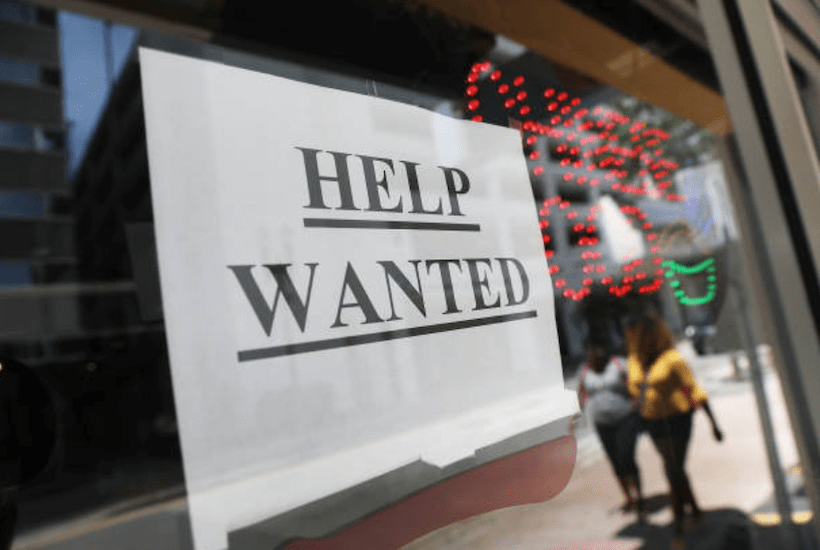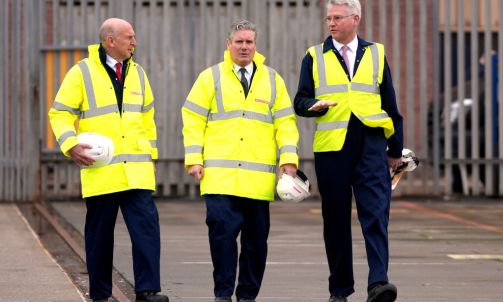Emergency income support has a time and place in buoying Australians through the pandemic. But the usefulness of the unprecedented — but nonetheless unsustainable — emergency measures is very quickly reaching the end of its course.
New data show that employers are struggling to find workers to fill vacant posts. Over half of employers reporting recruitment difficulties say the challenge is a lack of applicants — despite record numbers of individuals currently sitting idly on the employment sidelines.
It’s understandable that attention has primarily been paid to the rate of unemployment when judging the scale of the pandemic’s economic conditions. However, there is increasing appreciation for why lifting the participation rate is what really matters in fuelling the economic recovery.
What the new figures show is that employers are trying to get their businesses out of hibernation — but there aren’t the jobseekers to meet the call. Yet, there can be no economic recovery if there aren’t workers filling vacancies.
The occupations in greatest demand are those that are relatively low skilled, such as retail salespeople, childcare workers, truck drivers, clerical staff, and sales reps. Since such roles tend to impose fewer hurdles in terms of applicants’ skills, experience, and qualifications, it might be expected they’d be flooded with would-be workers willing to trade daytime Netflix for the workplace.
Lazy analysts are fixated on the demand side of labour markets — presuming that employment outcomes are purely driven by broader macroeconomic activity (never mind that activity is derived from the economy’s inputs; particularly labour).
Of late, they especially see it as the place of government to propel this activity; through big spending initiatives and associated ‘multiplier effects’. Astonishingly, some propose yet more fiscal stimulus as the key to getting Australia’s economy back on track.
What they fail to appreciate is how the supply side of labour markets work; which warn, instead, of the perils of elevated levels of income support (particularly the JobSeeker and JobKeeper payment schemes).
Individuals on income support currently face few incentives to genuinely seek work; many deferring their job search efforts until bolstered support measures are slated to be withdrawn. Many have little income to gain (some even face income losses) from re-entering the workforce.
To try to fill positions, employers may be pressed to offer higher wages — in turn, nudging up consumer prices — or may be forced to keep their doors closed.
But that hurts employers, taxpayers, and those individuals incentivised away from the workforce. Ultimately, the nation bears the cost as economic recovery is adjourned.
That’s why this latest data must serve as a cautionary tale for those inciting for a permanently higher unemployment benefit — amidst recent rumours government is entertaining such a proposal, despite projections of persistently low inflation rates into the medium term.
It should also deter those who wish for the JobKeeper package to be extended in its current form past the planned September expiry.
To date, few furloughed workers have genuinely confronted the risk that they may not indeed have a job to return to when the time comes — or that structural changes (accelerated by changes in business practice and consumer preferences through the pandemic) might mean they’d be better off transitioning elsewhere.
Among the decisions facing policymakers is how to taper income support while averting the dreaded employment ‘cliff’. But any illusions that the status quo can accommodate the desired recovery trajectory must now be put to bed.
Policy support going forward must be two-pronged — with interventions specifically geared to address, separately, the short-term and long-term risks.
In the short term, it may prove infeasible to fully withdraw support to some sectors of the economy impacted by current conditions. But to the extent that extraordinary levels of support are sustained in the short and medium-term, they’ll need to be more limited, capped, and targeted than is currently the case.
Limited, in that any supplementary support must be flexible enough to be withdrawn swiftly when conditions no longer make it necessary (rather than being contingent on a fixed time period — which only stalls the recovery). Capped, in that support must be only modest in compensation to avoid further disincentive effects — and in mitigating the cost blowout to taxpayers. And targeted, in that support should be available only to those in industries and geographic regions where government-imposed prohibitions place unavoidable constraints.
Looking longer-term, there’s far more harm to be done by prolonging elevated income support and suppressing work incentives. A particular risk confronting displaced workers is that of ‘scarring’ — meaning individuals may become so disillusioned and damaged from being out of work that they become unsuitable for employment down the track.
Accordingly, income support must for the bulk of the economy must be eased. The one-size-fits-all approach to income support that has characterised the pandemic response to date will thus need to be reassessed — with more flexibility, tailoring, and a view to delivering employment outcomes.
The government is known for quipping that the best form of welfare is a job. To truly deliver on this premise, government must get to work on getting Australians back to work.
Glenn Fahey is a Research Fellow at the Centre for Independent Studies.
Got something to add? Join the discussion and comment below.
Got something to add? Join the discussion and comment below.
Get 10 issues for just $10
Subscribe to The Spectator Australia today for the next 10 magazine issues, plus full online access, for just $10.


























Comments
Don't miss out
Join the conversation with other Spectator Australia readers. Subscribe to leave a comment.
SUBSCRIBEAlready a subscriber? Log in